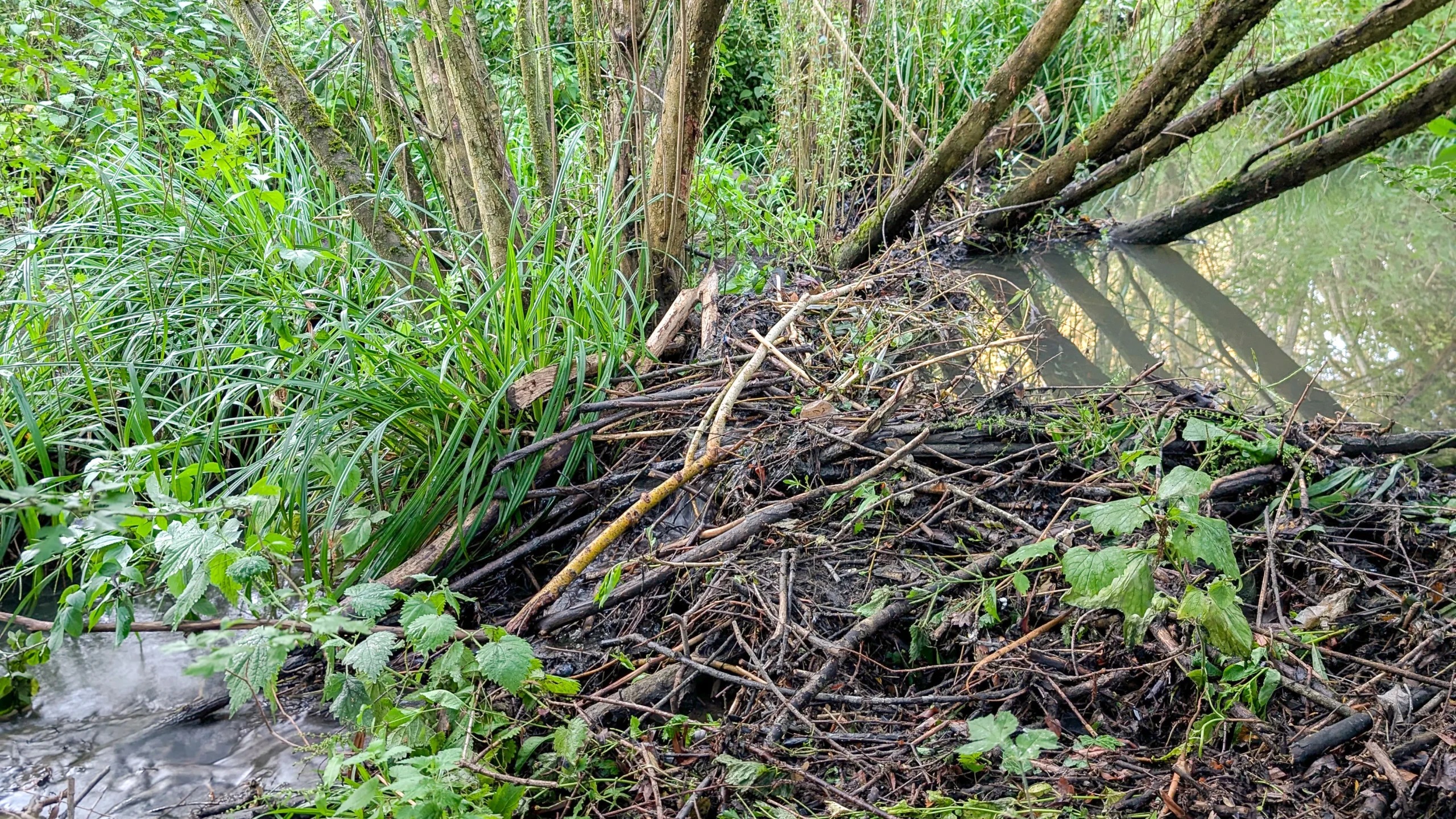The first objective of the Ealing Beaver Project is to reduce flooding in urban Greenford. The area by Greenford station has been prone to flooding in high rainfall events. The storm water system gets overwhelmed with high volumes of water including water passing through Paradise Fields through Costons Brook. Paradise Fields was already earmarked by the council for expensive engineering works to mitigate the flooding, but we offered a cheaper natural solution: Beavers.
Beavers are ecosystem engineers, building dams and complex wetlands that hold more water at Paradise Fields. During high rainfall events, water more slowly percolates through the site as compared to before the beavers’ arrival, leading to less urban flooding downstream. Within months of the beavers’ reintroduction to Paradise Fields, the beavers built five dams and have reduced flooding downstream. The busy beavers are continuing to build more dams which are holding more water on site.
Why do beavers build dams?
Beavers are the world’s second largest rodent, weighing up to 30kg! They are not great runners, they are not great climbers, but they are fantastic swimmers! They have many adaptations to an aquatic lifestyle. Their hind feet are webbed. Their tails are flat and scaly that can be used as a rudder for swimming. They can hold their breath underwater for 15 minutes. They have a second transparent eyelid, called a nictitating membrane, that enables them to see underwater. Even their heart is more similar to an aquatic animal than a terrestrial one.
All of this goes to say that they feel more safe in water. The dams the beavers make create pools behind the dams, a safe location if something startles them. If there is not enough deep water for them, they keep building more dams to create a series of pools for more safety for them. They can also notch their dams to regulate the water between dams. If a dam gets damaged, they come back and repair or modify it to suit their needs. Their dam building is for their safety, but people also benefit from flood mitigation.
Not enough water?
The water storage that the beavers facilitate also helps reduce the effects of drought. The water stored behind beaver dams becomes a reservoir from which water can dissipate into the dry surroundings. Leaving space for beavers and their wetlands will help lesson flooding and drought during a time of more extreme weather fluctuations.
Climate solution
With climate change becoming more extreme, nature restoration is becoming more important. Wetlands are some of the most carbon-dense ecosystems yet wetlands are also one of Earth’s most threatened habitats; over a third of the world’s wetlands have disappeared since 1970. Wetlands, like the ones beavers create, help regulate the climate and alleviate the effects of climate change. The Ealing Beaver Project hopes to show how restoring beavers to their native range can have many benefits for people and nature, even in the urban landscape.
